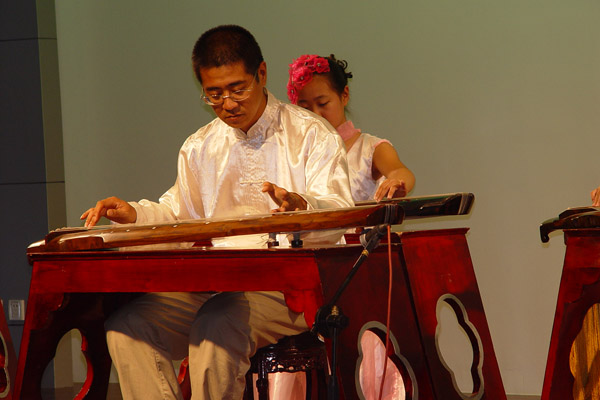
Musicians play on Guqin, a seven-stringed zither.
Guqin, a seven-stringed zither, is a signature art form of the historic and cultural city of Changshu, a county-level city belonged to Suzhou.
Changshu was the home of Yan Yan, a representative of Confucius culture during the Spring and Autumn Period (770-476 BC). Yan hoped to educate people with the help of music, which led to Guqin. Then Yan Tianchi founded the “Yu-shan School of Qin” at the end of the Ming Dynasty (1368-1644) which was popular for more than 400 years and praised as “authentic Guqin culture”. Guqin masters, like Xu Qingshan and Wu Jingluo, also contributed to the development of the school. In 1984, the Yuan-shan Qin Club reopened with governmental and social support. In 2014, Changshu was designated as the “Hometown of Guqin” by the Jiangsu Provincial Department of Culture and the IOV (International Organization of Folk Art (Internationale Organisation für Volkskunst).
The Local authority of Changshu city founded the “Yu-shan School Guqin Art Museum” based on an ancient Ming Dynasty building in 2005, in an effort to protect and carry forward Guqin culture, and to promote the cultural image of Changshu city. Other institutions, such as the Yu-shan Qin Club for Youth and the Art Studio for the Yu-Shan School of Qin, were also established to better demonstrate, study, exchange and promote the culture of Guqin.